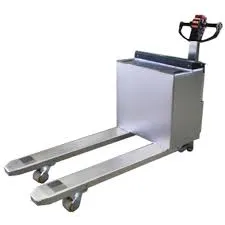


Anti-Fall Protection Ensuring Safety in Work Environments
In various industries such as construction, maintenance, and warehousing, the risk of falls is a significant concern. According to the Occupational Safety and Health Administration (OSHA), falls are one of the leading causes of workplace injuries and fatalities. To mitigate these hazards, implementing effective anti-fall protection measures is essential. This article explores the importance of fall protection, the types of systems available, and best practices for ensuring safety in the workplace.
Understanding the Importance of Fall Protection
Falls can occur from various heights, whether from ladders, scaffolds, roofs, or even walking surfaces. The consequences of such accidents can be severe, leading to long-term disabilities or even death. In addition to the human cost, falls can also cause significant financial burdens for employers due to medical expenses, lost productivity, and potential legal liabilities. Therefore, organizations must prioritize fall protection to create a safe working environment.
Types of Fall Protection Systems
There are several types of anti-fall protection systems designed to prevent falls and minimize the risks associated with working at heights
1. Guardrail Systems These are barriers installed around elevated surfaces to prevent workers from falling. Guardrails must be constructed to specific height and strength requirements, ensuring that they can withstand considerable force.
2. Personal Fall Arrest Systems (PFAS) This includes harnesses, lanyards, and anchors designed to secure a worker in the event of a fall. A well-fitted harness distributed the force of a fall evenly across the body, reducing the risk of injury.
3. Safety Nets Safety nets are installed below work surfaces to catch workers in case they fall. They are particularly useful in areas where other forms of protection are impractical or impossible.
4. Warning Line Systems These are ropes or barriers set up to alert workers about edges and potential fall hazards. While they do not prevent falls directly, they serve as a visual warning to maintain awareness.
5. Safety Monitors A designated safety monitor can keep an eye on workers and ensure they adhere to safety protocols. This person must be trained in fall hazards and the use of protective equipment.

Best Practices for Fall Protection
Implementing an effective fall protection program requires proper planning, training, and maintenance. Here are some best practices that organizations should adopt
1. Conduct Risk Assessments Regularly evaluate the workplace for potential fall hazards. Identify high-risk areas and develop tailored fall protection strategies.
2. Training and Education Train employees on the proper use of fall protection equipment and best practices. Regular refresher courses ensure that workers remain vigilant about safety standards.
3. Regular Equipment Inspections Inspect fall protection equipment regularly to ensure it is in good working condition. Replace any damaged or worn-out gear immediately.
4. Create a Fall Protection Plan Develop a comprehensive fall protection plan that outlines the procedures, equipment, and responsibilities related to fall safety. This plan should be readily accessible to all employees.
5. Encourage Reporting Foster a culture of safety where employees feel comfortable reporting hazards and near-misses without fear of repercussions. An open dialogue can lead to timely interventions and improvements.
6. Collaborate with Experts Engage safety professionals or consultants who specialize in fall protection to review your policies and provide recommendations based on industry best practices.
Conclusion
Anti-fall protection is a critical aspect of workplace safety that cannot be overlooked. By understanding the risks associated with falls and implementing appropriate safety measures, organizations can significantly reduce accidents and their accompanying costs. Investing in fall protection is not only a legal obligation but also a moral responsibility to ensure the well-being of all employees. As industries continue to evolve and jobs become more demanding, prioritizing fall safety will be paramount in safeguarding workers and promoting a culture of safety excellence. Ultimately, a proactive approach to fall protection fosters a healthier, more productive workforce.



